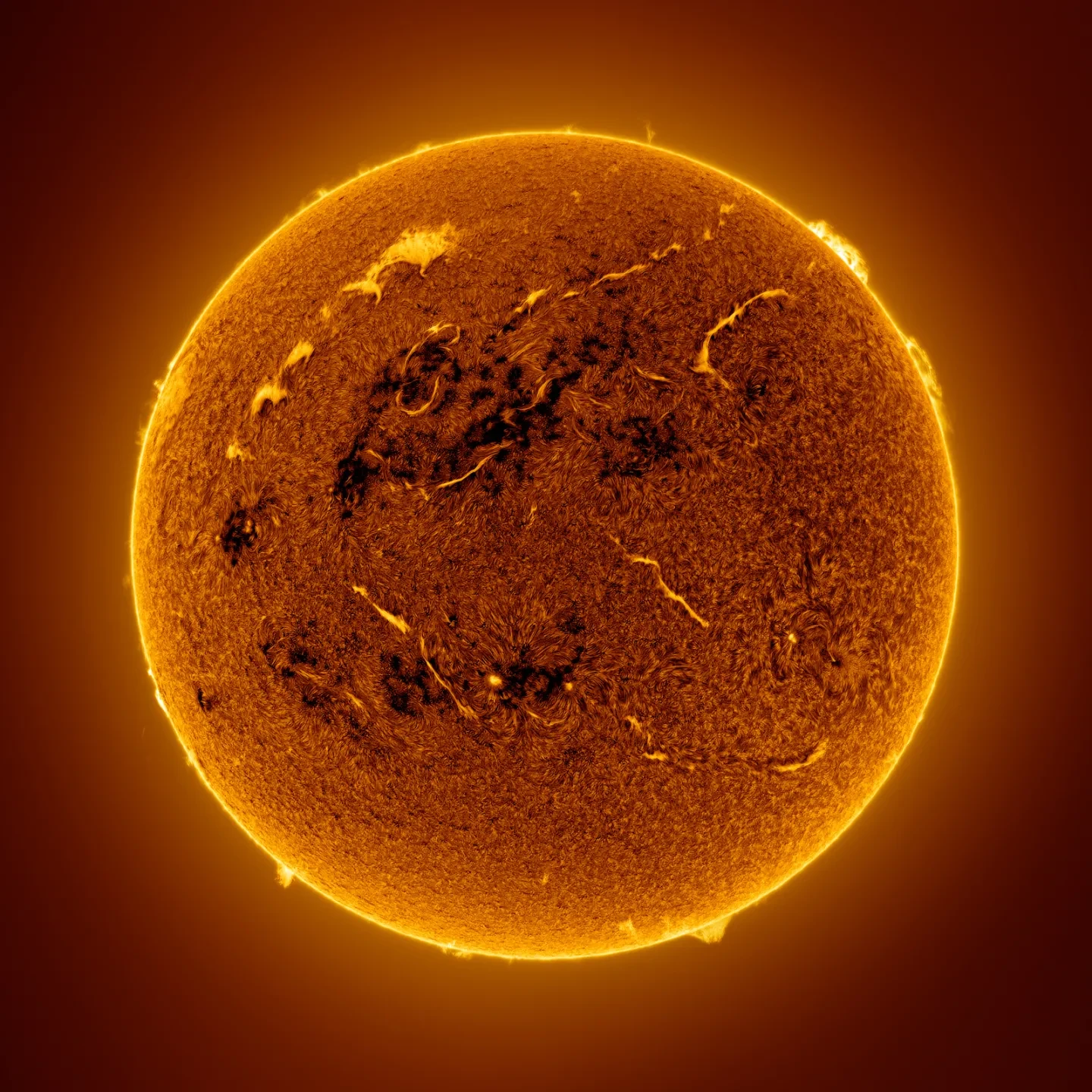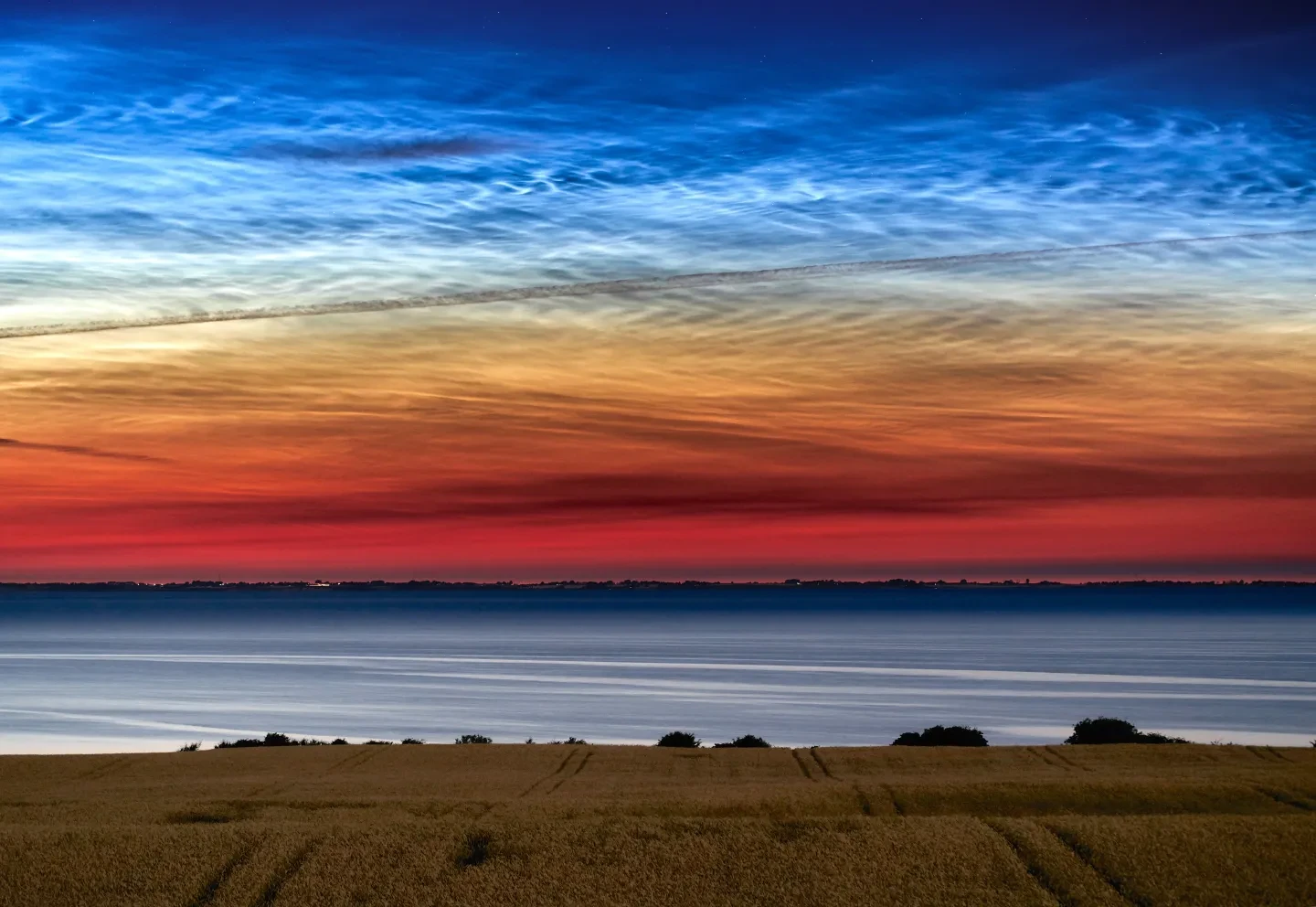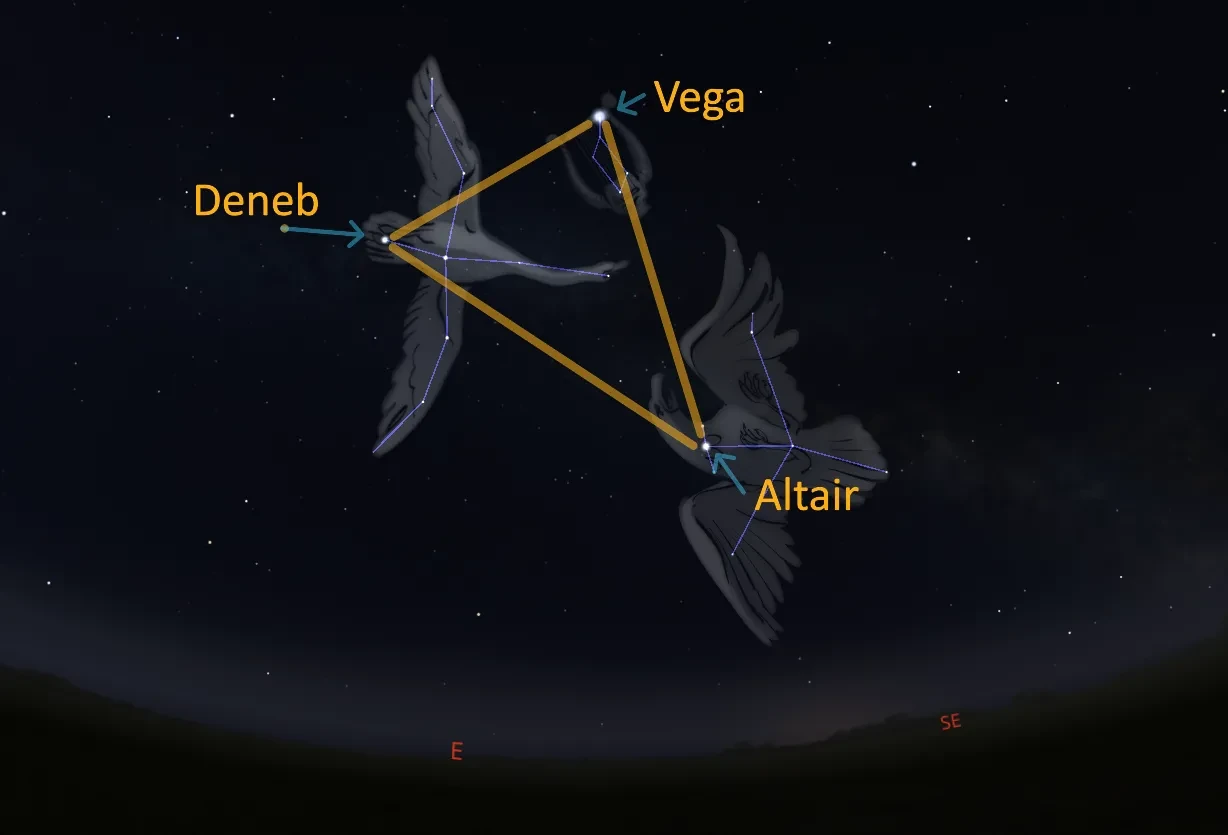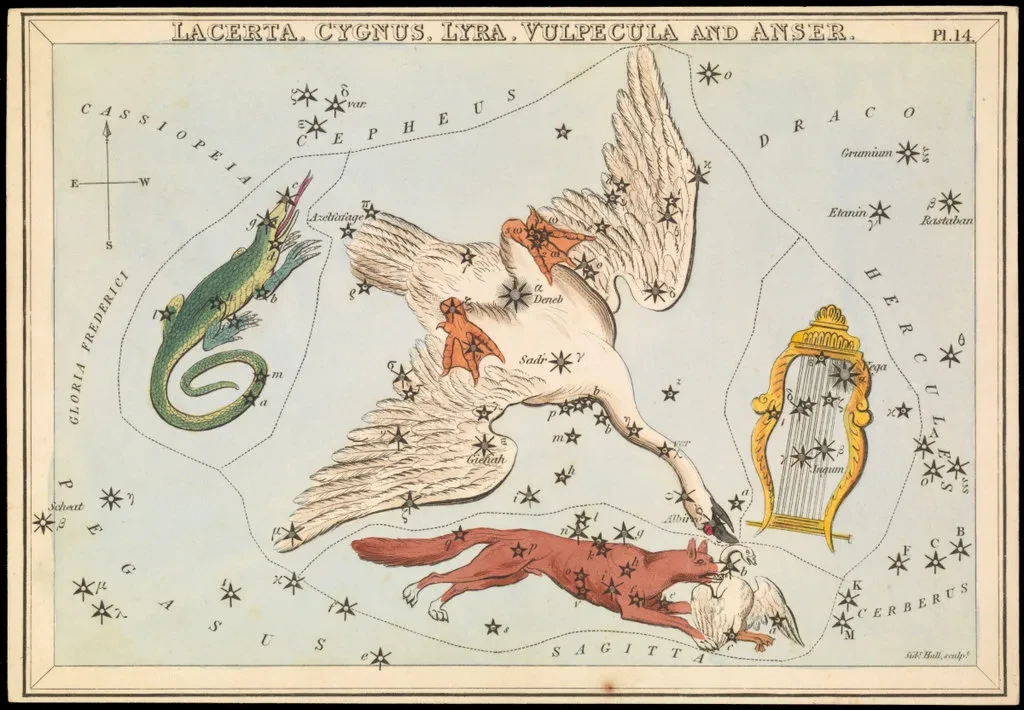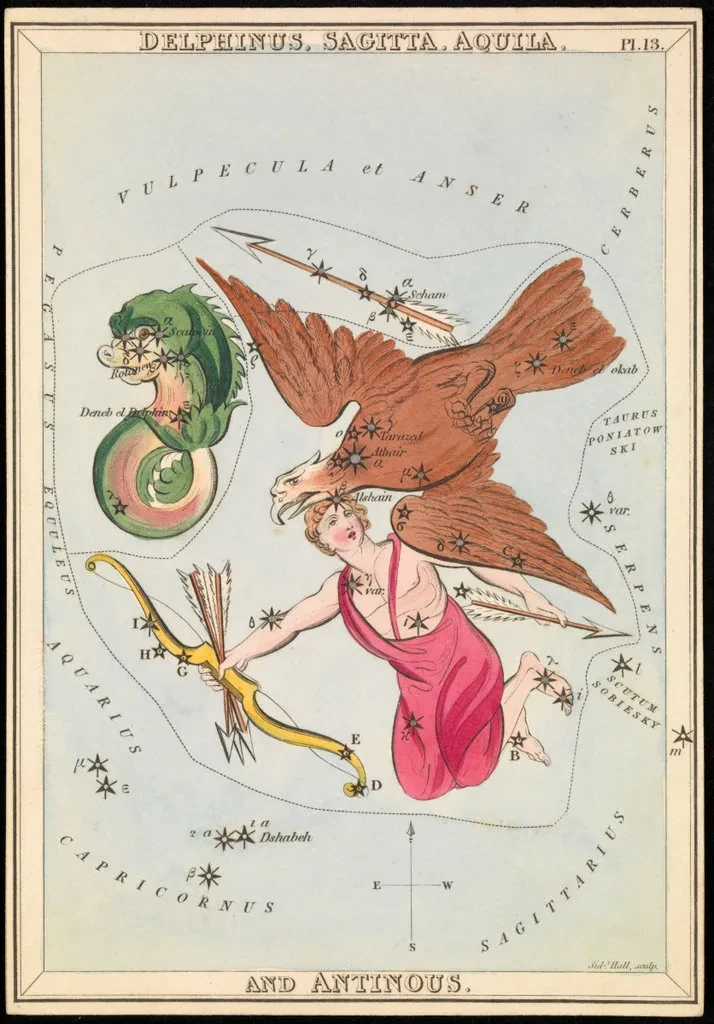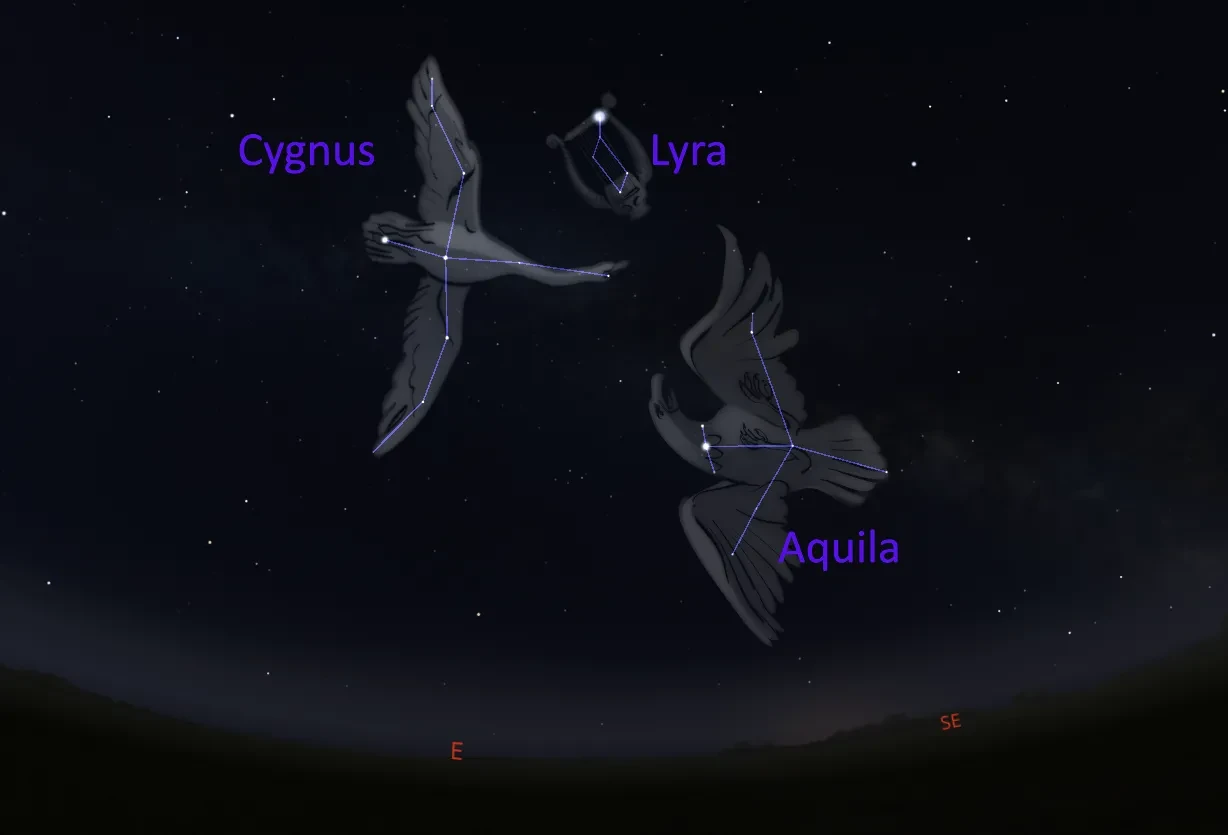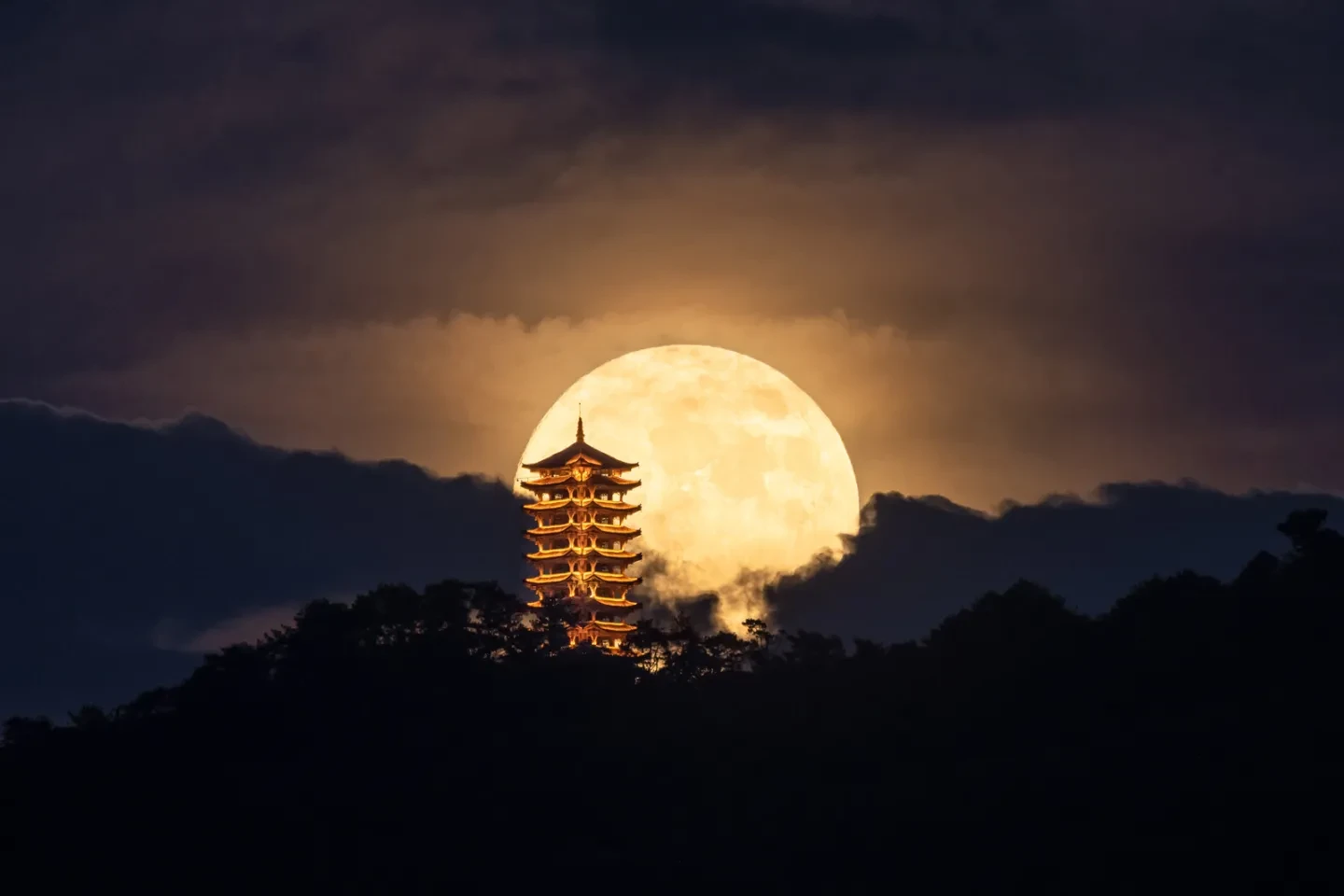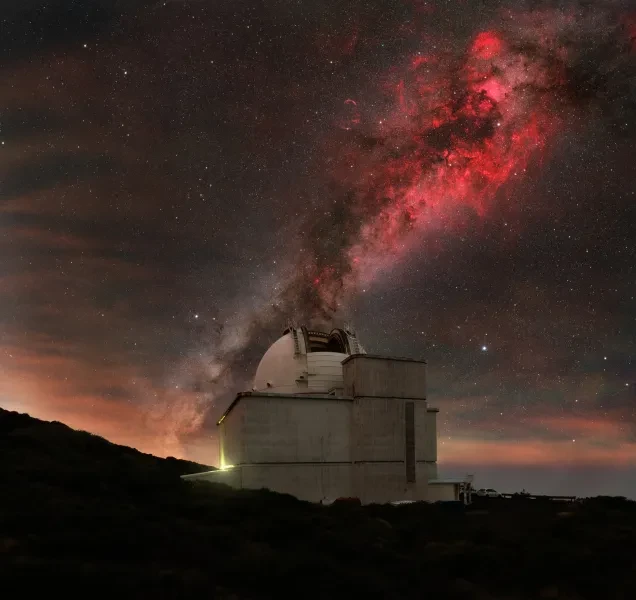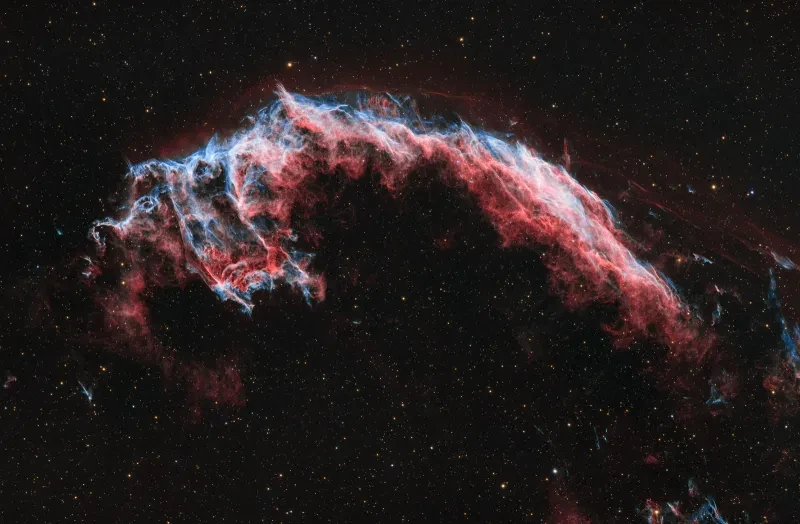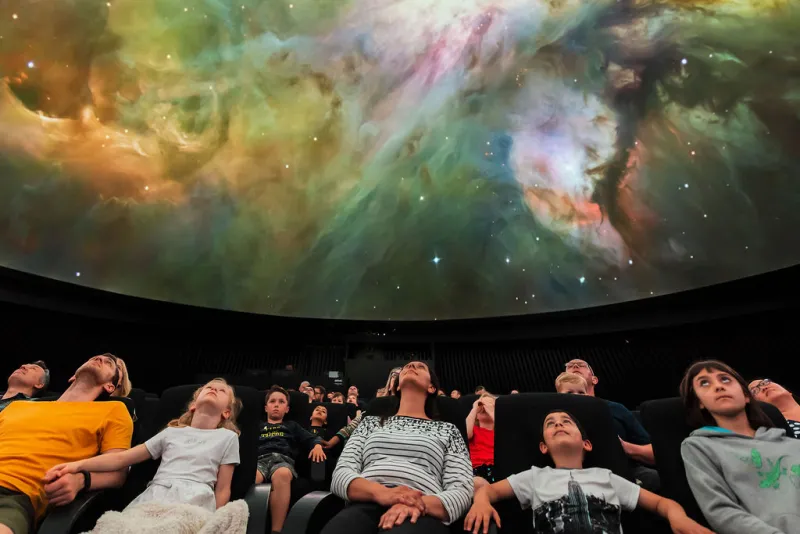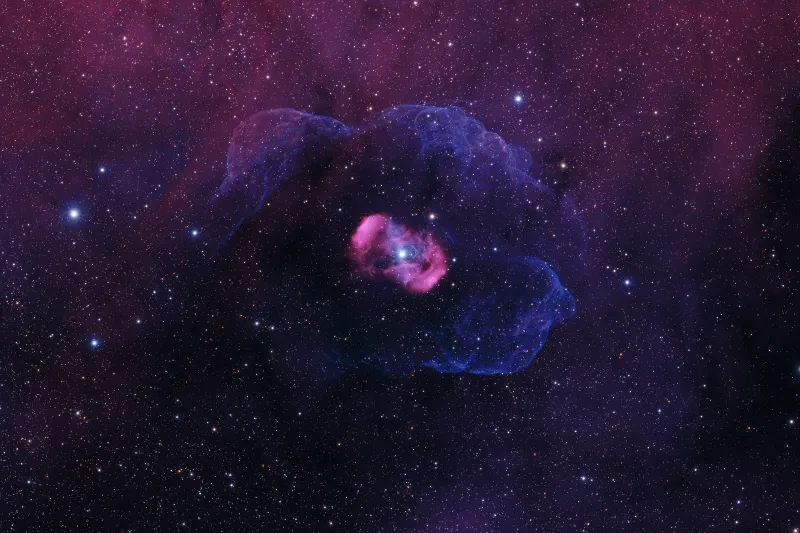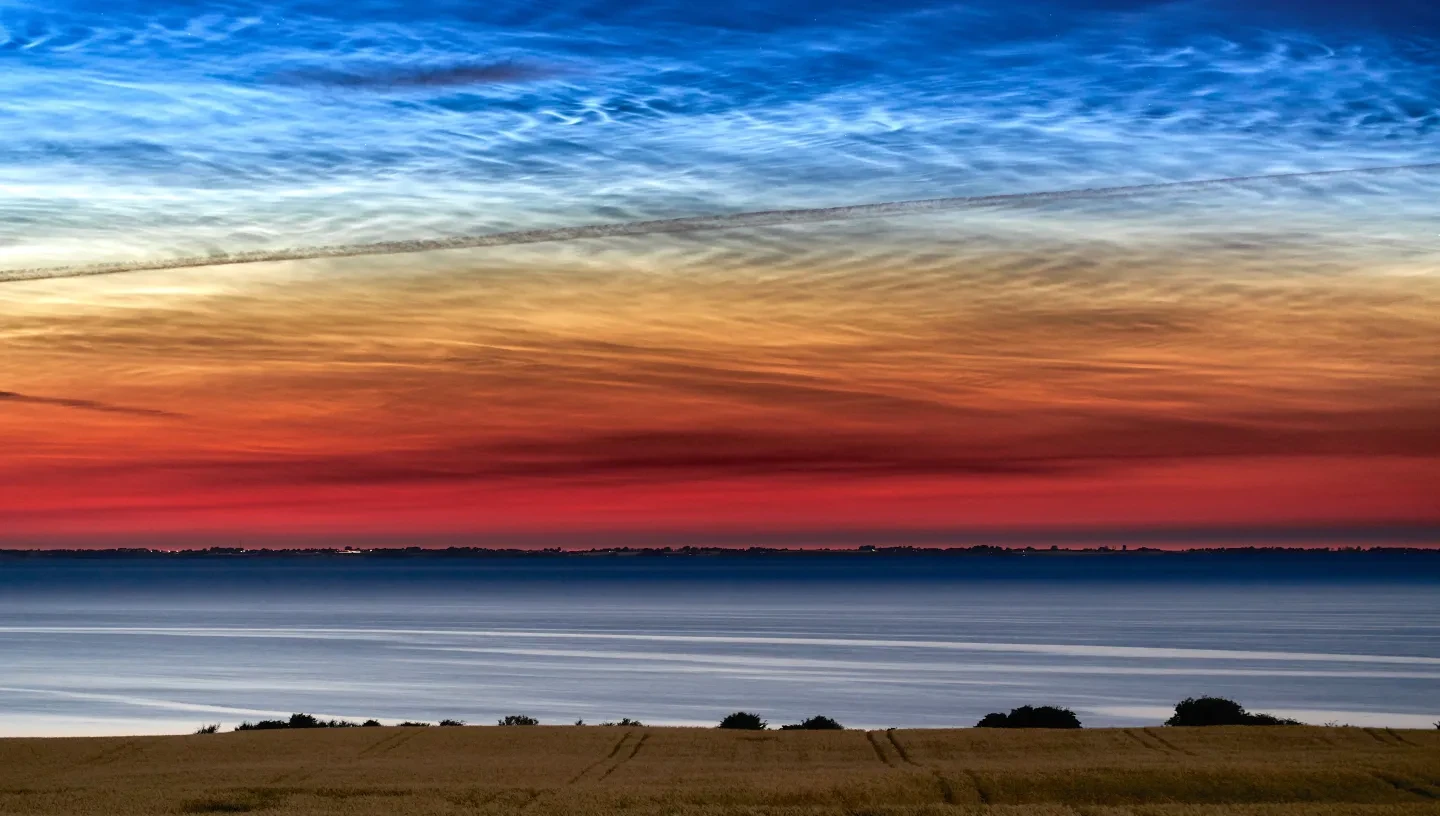
Discover what to see in June's night sky, from eerie glowing clouds, to a trio of constellations in the Summer Triangle, and more.
Top 3 things to see in the night sky in June 2025:
- Throughout the month - Look out for the eerie glow of noctilucent clouds
- Throughout the month - Find the bright stars of the Summer Triangle and its three associated constellations
- 30 June - Catch Mars and the Moon close together in Leo
Details given are for London and may vary for other parts of the UK.
Look Up! Podcast
Royal Observatory Greenwich astronomers Catherine and Imo talk through some of this month’s must-see cosmic objects in this podcast. They also discuss two cosmic news stories: a new James Webb Space Telescope image of the galaxy cluster Abell S1063, and a potential dwarf planet discovery! Join us on X at the start of June to be part of the conversation.
The summer solstice
“Can you believe it’s still light outside at 8 pm?” we all say in unison. It happens every year, and yet it still amazes us - even astronomers.
The 23.44° tilt of the Earth’s axis will be tilted the most towards the Sun in the Northern Hemisphere. This is technically an exact moment, occurring at 03.42 BST (02.42 GMT), but means 21 June will be the day with the shortest night and longest amount of daylight, with the Sun rising to its highest in the sky at local noon.
However, as glorious as it may be soaking up the Sun from sunrise at 4.43 am until sunset at 9.21 pm, it means we’re all going to have to stay up way past our bedtimes to get a good look at what the night sky has to offer. And even then, at their darkest the night skies won’t be dark enough to technically call 'night', as the Sun will only sink far enough beneath the horizon to allow for 'astronomical twilight'. But at least it will be warm!
Noctilucent clouds
As compensation for the late nights and light skies, June offers an opportunity to see a phenomenon only visible for about a month on either side of the solstice: noctilucent clouds.
Noctilucent, a word with Latin origins meaning ‘night shining’, aptly describes these eerie silver wisps that appear to glow in the night.
These clouds form unusually high up, in a layer of the atmosphere called the mesosphere, between 50 and 85 km above the Earth’s surface. They are made of icy dust particles. The dust that allows these clouds to form is provided by micrometeorites, volcanic eruptions and rocket launches, and the formation of ice on the dust only occurs in the warm summer months, when this layer of the atmosphere actually reaches its coldest.
We see these wispy clouds glow thanks to a combination of both their unusual height and the Sun’s proximity to the horizon after sunset, allowing the observer to be in darkness while the Sun still illuminates these mesospheric icy clouds.
To get a glimpse of the only type of cloud an astronomer wouldn’t mind seeing, look to the western horizon about one hour after sunset.
The Summer Triangle
Stargazing during the lightest nights requires the brightest stars, and three stars stand out the most in the summer months - together forming the ‘Summer Triangle’. The stars, Deneb, Vega and Altair, each belong to their own individual constellations, which means that finding the points of the Summer Triangle allows you to place three separate constellations.
Cygnus
Deneb is the faintest of the three stars in the Summer Triangle, but only due to its impressive 2.5 thousand light year distance; in terms of absolute magnitude, Deneb is by far the brightest.
Meaning ‘tail’ in Arabic, Deneb represents the tail of the constellation Cygnus the swan. There are various swans in ancient mythology that can be associated with Cygnus. One accounts for one of Zeus’ many escapades in animal disguise, transforming himself into a swan to seduce the Spartan queen Leda.
An Ancient Roman interpretation of the constellation is my personal favourite, representing Cygnus, the grieving lover of Phaethon, who fell into a river and perished after trying to ride the Sun God’s chariot. According to the myth, Cygnus agreed with Zeus that if Zeus transformed him into a swan he would give up the rest of his human life. This enabled Cygnus to retrieve Phaethon’s bones from the river and give him a proper burial, a sacrifice that moved the gods to place Cygnus in the stars.
In another story, is it said that as a testament to his unmatched musical skill, the Ancient Greek musician Orpheus was transformed into a swan upon his death and placed in the stars alongside his instrument, the lyre.
Lyra
The constellation Lyra represents this very instrument: the lyre once played so beautifully by Orpheus it is said he could enchant even lifeless objects like stones. Lyra is a fairly small constellation made up of five main stars, of which Vega is by far the brightest.
It’s not hard to spot this constellation as Vega is not only the brightest point of the Summer Triangle, but the fifth brightest star in the night sky.
Aquila
The star Altair makes up the third point of the Summer Triangle and is the brightest star in the constellation Aquila the eagle.
Aquila represents Zeus’ attendant eagle, who had the important job of carrying and retrieving his lightning bolts.
The eagle also played starring roles in a few Ancient Greek myths and legends. This was the eagle tasked with kidnapping Ganymede, a young Trojan boy who fell victim to Zeus’ attraction. The eagle scooped up the boy and flew him to Mount Olympus, where he was made cupbearer to the gods.
Ganymede is actually seen right next door, represented by the neighbouring constellation Aquarius the cupbearer. Aquila the eagle was also the very same bird involved in the punishment of Prometheus, who was chained to a rock for eternity after taking fire from the gods and giving it to humanity. As a gruesome part of the punishment, Zeus’ eagle would eat Prometheus’ liver every single day since, unfortunately for the damned Prometheus, his divine organs would regenerate each night.
The Summer Triangle and all its surrounding mythology can be found hanging high in the eastern sky, and will stand out even in the light summer skies.
Southern Hemisphere observing
On 30 June a few places in the Southern Hemisphere will be able to see a lunar occultation of Mars.
At around 2.30 am, viewers in Peru, Ecuador and Colombia will see the Red Planet pass behind a waxing crescent moon and disappear from view. About an hour later Mars will reappear on the other side, however the Moon will have sunk below the horizon for many viewers.
Although those of us elsewhere in the world won’t be able to see Mars and the Moon cross paths, we’ll still be able to see them hanging close in the sky. You can find them in the western sky in the constellation Leo the lion.
The Moon's phases in June 2025
First Quarter: 3 June 2025 (04:41)
Full Moon: 11 June 2025 (08:44)
Last Quarter: 18 June 2025 (20:19)
New Moon: 25 June 2025 (11:32)
Stargazing tips
- When looking at faint objects such as stars, nebulae, the Milky Way and other galaxies, it is important to allow your eyes to adapt to the dark so that you can achieve better night vision.
- Allow 15 minutes for your eyes to become sensitive in the dark and remember not to look at your mobile phone or any other bright device when stargazing.
- If you're using a star app on your phone, switch on the red night vision mode.
You may also be interested in
Header image: Noctilucent Lines of Perspective © Adrien Mauduit, shortlisted in Astronomy Photographer of the Year 2017
